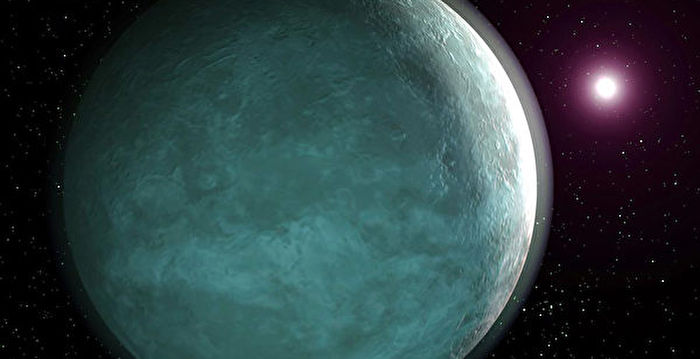[EpochTimesDecember292021](Epoch Times reporter Di Rui compiled a report) A study published in the journal Nature Astronomy on December 16 detected an out-of-system for the first time The magnetic field on the planet and the discovery that the relationship between the magnetic field on the planet and the chemical composition of the atmosphere is inconsistent with the existing theory of planetary development.
The magnetic field on the earth protects the creatures on the earth from the solar wind and cosmic high-energy rays. Therefore, understanding the magnetic field on exoplanets is also an important step in the exploration of extraterrestrial life.
Just as the earth’s magnetic field interacts with the solar wind to produce charged particles, forming a magnetosphere around the earth, Hubble has detected the magnetosphere of exoplanet HAT-P-11b, which is composed of a large number of carbon ions. This planet is 123 light-years away from Earth and is about the size of Neptune.
The magnetosphere of this planet is very special. Not only does it surround the planet, some carbon ions also fly away from the planet at an average speed of 100,000 miles per hour, forming a tail that is at least one astronomical unit long. An astronomical unit is the distance between the earth and the sun. In contrast, the speed of charged particles in the Earth’s magnetosphere is about 900,000 miles per hour.
Researchers believe that the principle of the magnetosphere on HAT-P-11b is the same as that on the earth, but the distance between HAT-P-11b and its host star is only one twentieth of the distance between the earth and the sun, which makes HAT-P-11b The upper atmosphere has a relatively high temperature, and the material is gasified to form a long magnetic tail structure in space.
The researchers also found that the metallicity of the HAT-P-11 atmosphere is lower than theoretically expected. Metal abundance is the proportion of chemical elements that are heavier than hydrogen and helium.
In the solar system, low-temperature gas planets like Uranus and Neptune have high metal abundance in their atmospheres but weak magnetic fields; while gaseous planets with much larger volumes, such as Jupiter and Saturn, have low metal abundance in their atmospheres, but The magnetic field is strong. Scientists constructed a theoretical model of planetary evolution based on these laws.
The volume of HAT-P-11b is similar to that of Neptune. According to the existing theory of planetary development, its atmosphere will have a higher metal abundance. However, the metal abundance in the atmosphere of HAT-P-11b was detected to be low, which made researchers realize that the existing theory of planetary evolution is not perfect.
Gilda Ballester of the University of Arizona, one of the main researchers, said: “Although the mass of HAT-P-11b is only 8% of Jupiter, we think it is more like a A small Jupiter, unlike Neptune. And the low metal abundance we saw on HAT-P-11b means that our theory of exoplanet formation still needs adjustment.” ◇#
Editor in charge: Ye Ziwei
.
